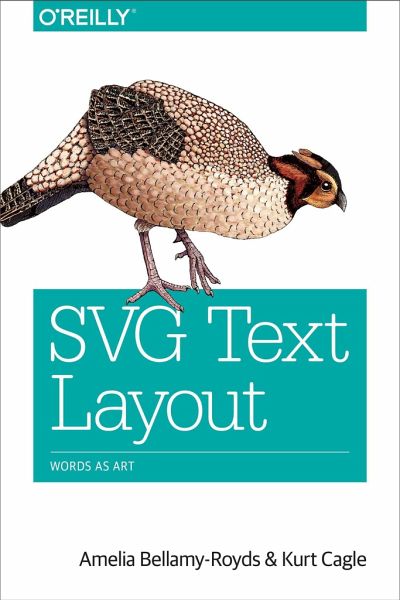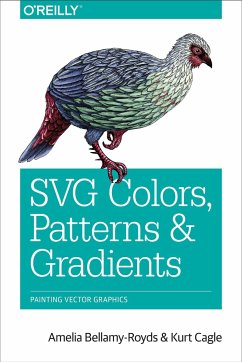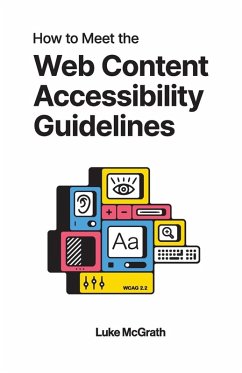
SVG Text Layout
Words as Art
Versandkostenfrei!
Versandfertig in über 4 Wochen
24,99 €
inkl. MwSt.
Weitere Ausgaben:

PAYBACK Punkte
12 °P sammeln!
Scalable Vector Graphics (SVG) is an image format, so text isn't the first thing you might think of when considering its uses. But one of SVG's key features is its ability to encode text in a machine-readable form. This book takes a deep dive into the use of text within SVG to explore the creative possibilities as well as the potential pitfalls. You'll start with SVG's text basics, and then learn methods for using SVG to generate complex layouts. If you're an intermediate SVG developer familiar with CSS-styled HTML text, you're ready to get going. This book covers: * The SVG text and tspan ele...
Scalable Vector Graphics (SVG) is an image format, so text isn't the first thing you might think of when considering its uses. But one of SVG's key features is its ability to encode text in a machine-readable form. This book takes a deep dive into the use of text within SVG to explore the creative possibilities as well as the potential pitfalls. You'll start with SVG's text basics, and then learn methods for using SVG to generate complex layouts. If you're an intermediate SVG developer familiar with CSS-styled HTML text, you're ready to get going. This book covers: * The SVG text and tspan elements, and basic attributes for positioning simple text labels within a graphic * SVG's fill and stroke properties for controlling text's visual appearance * Complex text layouts, using formatted poetry as examples * Features to set the position and orientation of individual text characters * Multidirectional text, including right-to-left horizontal text and vertical text * Curved or complex text layouts with the textPath element * Font options for your SVG, including web fonts, and their impact on text layout













